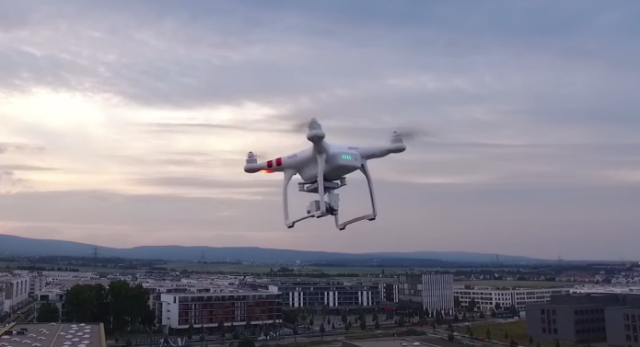DJI, the leading manufacturer of consumer drones, is building a new research and development center in Palo Alto, Calif., that could hold 75 or more engineers, according to several job listings posted in recent weeks.
The center, housed in a 12,000-sq.-ft. building located east of Stanford University on Portage Avenue, is already home to three engineers, including vice president of systems and applications engineering Darren Liccardo. Before joining DJI in August, Liccardo built and led the autopilot team for Tesla Motors , according to his LinkedIn page.
“Silicon Valley attracts the best possible talent to one spot. That’s really important to us,” Perry says, though he declines to comment on the R&D center. “We’ve always had an international approach to hiring.”
The U.S. is the largest market for the nine-year-old company, which received $75 million in funding in May from Palo Alto-based Accel Partners to help it expand globally. Its white Phantom quad-copters have become a symbol for the industry, appearing everywhere from an episode of South Park to news reports describing downed drones on busy city streets (and even the lawn of the White House).
Until late 2013, DJI had a core North American staff of marketers, pilots, and cinematography experts based in Austin, Texas. But in December 2013 it suddenly fired 20 employees, including North American CEO and minority shareholder Colin Guinn, who subsequently filed an injunction challenging the company’s takeover of North American assets and rights to distribute on the continent. They settled seven months later.
DJI next opened a U.S. office in February 2014, when it unveiled a customer support and Hollywood-relations center in Los Angeles. A San Mateo office focused on customer support and photographers followed later that year.
The new Palo Alto R&D center will help DJI tap into Silicon Valley’s strength in computer vision and software, complementing Shenzhen’s expertise in hardware development. Current job listings call for skills in areas such as video streaming and storage, embedded software, and computer simulation.
A presence in the San Francisco Bay Area also allows DJI to work closely with developers, who can help it build up an ecosystem of software applications and new use cases, Perry says.
Software is an increasingly competitive space in the drone industry, which is trending toward smart features like obstacle avoidance, autonomous flight and sophisticated cinematography controls. DJI competitors 3D Robotics and Parrot already have Bay Area offices. Commercial drone startups Airware, Skycatch, Matternet, and DroneDeploy also compete for talent in the area.
Eric Cheng, who was the face of DJI in the U.S. until he resigned from his post as director of aerial imaging this month, says DJI’s Chinese teams work under a sense of great urgency. Competition to be the best company—and the best employee—is fierce. It’s a drive that he believes has given DJI an edge over its American competitors, though it sometimes leads it to release products before the technology or market is fully mature. He says it isn’t unusual to see a DJI product go from research to production in six months.
“There’s no delay between prototyping and manufacturing. There’s also no delay in sourcing components,” Cheng says. “If DJI can figure out a way to harness what Silicon Valley is good at and to integrate it into the rapid development pipeline that they’re really good at in Shenzhen … it will be the next level for the company.”
DJI is also pouring resources into developing a friendly legal climate in the United States, which is considering stricter rules for drone hobbyists and potentially years away from legalizing widespread commercial use. It hired Washington, D.C.-based policy lead Jon Resnick in January and vice president of policy and legal affairs Brendan Schulman, who is based in New York, in July.
It appears to be working: As of August, 71% of the commercial drone use cases exempted from the ban by the U.S. Federal Aviation Administration involved DJI drones. And Schulman now sits on the FAA’s Unmanned Aircraft Systems Registration Task Force.
“DJI is probably the first real example of a Chinese company that is seen mostly as a global company by consumers,” Cheng said.
Source: Fortune

